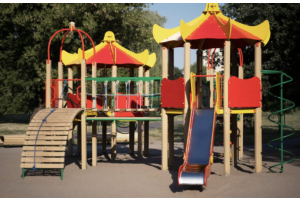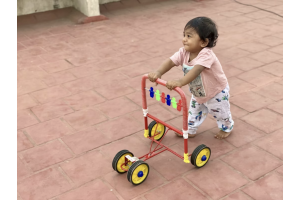A Parent’s Guide to Moving with Children

Moving with children in Florida, where families often relocate to take advantage of the sunny weather, vibrant communities, and diverse educational opportunities, can be a particularly challenging endeavor. The state's vast landscape from the bustling streets of Miami to the quiet shores of the Panhandle means each move comes with its unique set of challenges and opportunities. For families, preparing adequately for this transition is key to making the move as seamless and stress-free as possible.
Start with a Family Meeting
The first step in preparing for a move with children is to hold a family meeting. This meeting is crucial as it helps set the tone for what’s to come and allows every family member to voice their thoughts and concerns. Explain to the children why the family is moving, where they are moving to, and what changes they might expect. Encourage questions and provide reassurances, ensuring that the children feel they are an active part of the moving process, not just passive participants.
Choosing the Right Moving Company
Selecting a moving company that aligns with your family’s needs is essential. It’s important to research and choose a company that is reputable and has experience handling moves with children. Consider hiring local Coral Springs movers if you're in the area; they understand the locale and can provide tailored services to make the transition smoother. Make sure to check reviews and possibly get recommendations from other families who have moved recently to ensure that the company you choose is both trustworthy and competent.
Packing Tips for Families
Packing with children in the house can seem daunting, but with the right approach, it can become an inclusive and even fun activity. Involve the children by allowing them to pack some of their own belongings, especially the non-fragile ones like stuffed animals and books. Provide them with colorful markers and stickers to label their boxes. This not only helps them feel involved but also keeps them occupied. Teach them how to sort their items into what to pack, what to donate, and what to throw away, making the packing process a learning experience.
Keeping a Routine
During a move, keeping a routine is crucial for children. It provides a sense of normalcy amid the chaos. Strive to maintain regular mealtimes, bedtimes, and playtimes. If you usually read a story at bedtime, continue doing so throughout the moving process. These familiar routines are comforting for children and can greatly ease their transition to a new environment.
Safe Spaces during the Move
Create safe and familiar spaces for your children during the move. This starts in the old home as you pack up. Set aside a special area where kids can play and relax surrounded by familiar toys and comforts that won’t be packed until the last minute. Once you arrive at the new home, prioritize setting up the children’s rooms. This helps them feel settled and secures faster, and seeing their old belongings in the new space can significantly reduce anxiety.
Saying Goodbye to the Old Home
Helping children say goodbye to their old home and environment is an important step in the moving process. It allows them to express their feelings and find closure with the change. Organize a small farewell party and invite their friends. Encourage the kids to take pictures of their favorite spots in the house and neighborhood. You could also create a memory box where they can keep mementos from their old home, such as photos or small keepsakes. These activities can help children emotionally adjust and accept the move.
Exploring the New Neighborhood
Once you've settled into the new home, take the time to explore the neighborhood with your children. Discovering new places like local parks, libraries, and community centers can make the new environment exciting. This exploration can also help kids feel more at home and reduce their anxiety about the unknown. Try to connect with other families in the area and perhaps arrange playdates or social activities that can help your children make new friends.
School Transition
Transitioning to a new school is often one of the biggest challenges for children during a move. To ease this change, arrange a visit to the school before they start attending. Meeting future teachers and classmates in advance can relieve some of their anxiety. Discuss with the school how they support new students and if they have any programs or buddy systems in place to help your child acclimate. Keep an open line of communication with the teachers to monitor how your child is adjusting over the first few weeks or months.
Emotional Support and Patience
Throughout the moving process, it’s crucial to provide emotional support and show patience as your children adjust to their new surroundings. Be attentive to their feelings and encourage open discussions about their fears, worries, and excitement. Some children might adapt quickly, while others may take longer and need more support. Continue to reassure them and highlight the positive aspects of the new home and community.
Making the New House a Home
Finally, involve your children in the process of making the new house feel like home. Let them have a say in decorating their rooms or choosing new furniture. Establish new routines and traditions that incorporate the unique aspects of your new location. This participation not only helps them feel more connected to the new place but also gives them a sense of control and belonging in their new environment.
Conclusion
Moving with children requires careful planning, patience, and a lot of emotional support. By taking these steps, you can help make the transition smoother and less stressful for everyone involved. Remember, the goal is not just to move to a new house but to create a welcoming and loving new home where your entire family can thrive. With thoughtful preparation and a positive attitude, you can help your children embrace the move and find joy in their new surroundings.






